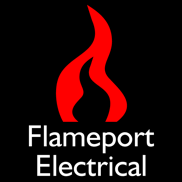Part P Building Regulations
Part P is a section of the Building Regulations relating to electrical work, and applies in England and Wales (Not Scotland).
What Part P is
Part P is one part of the Building Regulations. It applies to electrical installations in dwellings. There are many other parts, for example part A (Structure), Part F (Ventilation) and Part L (Conservation of fuel and power).
'Dwellings' refers to places where people live, such as houses, flats and caravans. It does not include offices, shops or factories.
All of the Approved Documents, including Part P, can be downloaded for free. Paper copies can also be purchased.
What Part P is NOT
It is not a qualification, exam or anything which can be obtained. 'Part P Qualified' and 'Part P Test Equipment' do not exist. People cannot 'do part P' at college or anywhere else.
There are various training courses which can be taken to assist in proving competence, so that an individual can register with one of the approved persons schemes. These should not be called 'part P courses'.
What this means
Some types of electrical work in dwellings require that the work be notified to Building Control. There are three ways of doing this:
- Notify your local building control (LABC) before starting work. This usually involves sending a Building Notice to your local council along with the relevant fee.
- Use a member of a self-certification scheme (a 'competent person'). They will notify LABC via the competent persons scheme that they are registered with. You can search for a Competent Person here.
- Use of a third party certifier - someone who has been approved to certify third party work, and is a member of a scheme which provides this service. Using this involves the TPS being involved from the start, approving the design for the work, inspecting the work at both first fix and second fix stages, and only then conducting the required tests and issuing the required certification, finally notifying building control.
As of September 2019, NAPIT are the only scheme who provide this, and very few of their members are registered for it.
It is important to note that there is NO option for people to carry out notifiable electrical work and when completed have an electrician 'sign it off', i.e. notify building control. Members of competent persons schemes are only allowed to notify their own work, and for the few which belong to the third party certifier scheme they must be involved before any work has started.
Notifiable work includes a new consumer unit, new circuits and work within the defined zones in a bathroom. In England prior to April 2013, notifiable work included changes or additions to circuits in a kitchen and most outdoor electrical installations. Those older rules still apply in Wales.
Most minor electrical work does not require notification, but it must still comply with Building Regulations and a certificate should always be provided as stated in BS7671. Also note that Part P does not apply to commercial or industrial situations (such as offices, shops and factories).
The Video
Other myths
DIY electrical work is illegal
Anyone can carry out electrical work in their home, or anywhere else. However, there is the requirement to notify LABC, and in the case of DIY this will involve paying a fee, typically between £100 and £350. This may be uneconomical, as the fee may be more than the cost of the work.
Part P requires expensive test equipment, books and paperwork
Electrical contractors registered with a competent persons scheme are required to have the correct test equipment, which does cost many hundreds of pounds. A copy of BS7671 (Wiring Regulations) will cost around £75, and test certificates also cost money. However, this has nothing to do with Part P - electrical contractors should have all of these items anyway. Inspecting, testing and issuing certificates for electrical work is nothing new.
For DIY, you are paying LABC a fee, which should include the cost of testing and inspection.
Cable colours changed because of Part P
Cable colours would have changed anyway, this has nothing to do with Part P.
Cable in new colours could be used from April 2004 - many months before Part P was introduced. Most suppliers did not carry the new colour cable until much later, so many installations used old cable colours prior to January 2005 when Part P was introduced. The new cable colours were mandatory from April 2006. This did not mean that old colours were not available, as many wholesalers still had old stock, some people hoarded rolls of cable in their garage, or sold what they had left on eBay for inflated prices.
Most work in the old colours was probably done before Part P (January 2005), however this is just a coincidence. It is entirely possible that work prior to this was done in the new colours, or work after was done using the old cable colours.
Part P has 100s of requirements and is difficult / impossible to comply with
Part P has only one requirement.
P1: Reasonable provision shall be made in the design, installation, inspection and testing of electrical installations in order to protect persons from fire or injury.
There used to be a second part which was:
P2: Sufficient information shall be provided so that persons wishing to operate, maintain or alter an electrical installation can do so with reasonable safety.


